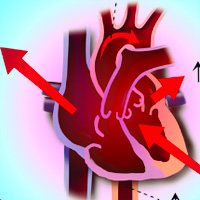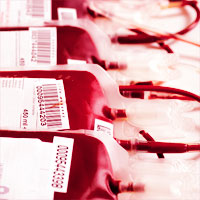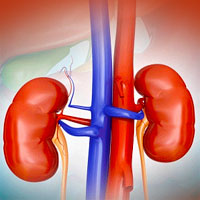Stories Category: Intensive Care

In Treating Sepsis, Questions About Timing and Mandates
The question of whether Rory's Regulations save lives isn’t asked or answered in the recent study. Sepsis deaths were already decreasing in the United States before the mandate, and determining its contribution to... read more

Organ Dysfunction, Injury and Failure in Acute Heart Failure
Managing patients with AHF remains a clinical challenge and current therapies have uncertain impacts on long-term morbidity and mortality. The use of therapies that prevent or reverse congestion-induced organ injury may represent... read more
Why Point-of-Care Ultrasound Should be a Mainstay in EMS
A former firefighter/EMT turned medical student describes the functional components, diagnostic uses and roadblocks of using this imaging technology. From the first enormous and hefty ultrasound scanners, circa 1965, to today's... read more

Effectiveness and Safety of Magnesium Replacement in Critically Ill Patients Admitted to the ICU
Rules of thumb for the replacement of electrolytes, including magnesium, in critical care settings are used, despite minimal empirical validation of their ability to achieve a target serum concentration. This study's... read more

NAM Goes Public with Efforts to Combat Burnout
The National Academy of Medicine called upon the public on Friday to help shape its ambitious plan to combat burnout among doctors, nurses and other health workers. At an open meeting at the organization's headquarters... read more

Non-invasive Ventilation for the Management of AHRF due to Exacerbation of COPD
Non-invasive ventilation (NIV) with bi-level positive airway pressure (BiPAP) is commonly used to treat patients admitted to hospital with acute hypercapnic respiratory failure (AHRF) secondary to an acute exacerbation of... read more

Are We Creating Survivors or Victims in Critical Care?
Delivering targeted nutrition to improve outcomes. Over the last 10 years, we are proud of the fact we have finally begun to reduce in-hospital mortality following severe sepsis in some countries worldwide. Further, mortality... read more

Palliative Care in Advanced HF Makes a Big Difference in Rare Controlled Trial
Patients with end-stage heart failure who received palliative care from an interdisciplinary team, along with usual evidence-based care, significantly improved in functional, psychosocial, and spiritual well-being compared... read more

Heart Rate Variability in Critical Care Medicine
Heart rate variability (HRV) has been used to assess cardiac autonomic activity in critically ill patients, driven by translational and biomarker research agendas. Several clinical and technical factors can interfere with... read more

Clinical Experience With IV Angiotensin II Administration
Angiotensin II is an endogenous hormone with vasopressor and endocrine activities. This is a systematic review of the safety of IV angiotensin II. Adverse events associated with angiotensin II were infrequent; however, exacerbation... read more

Sepsis Prediction in Critically Ill Patients by Platelet Activation Markers on ICU Admission
Platelets have been involved in both immune surveillance and host defense against severe infection. To date, whether platelet phenotype or other hemostasis components could be associated with predisposition to sepsis in critical... read more

Should All Massively Transfused Patients Be Treated Equally?
Although balanced resuscitation has become integrated into massive transfusion practice, there is a paucity of evidence supporting the delivery of high ratios of plasma and platelet to RBCs in the nontrauma setting. This... read more

Optimal Timing of RRT in Patients with AKI in the Context of Sepsis
Among 620 patients enrolled in AKIKI, 494 (80%) had sepsis and 413 (67%) septic shock. This can help to suggest recommendations in septic patients with AKI. AKIKI showed no significant difference in mortality between early... read more

Antibiotic Therapy in Comatose Mechanically Ventilated Patients Following Aspiration
Among comatose patients receiving mechanical ventilation, those without clinical, laboratory, or radiologic evidence of bacterial aspiration pneumonia did not require antibiotics. In those with suspected bacterial aspiration... read more

Impact of Telemedicine Monitoring of Community ICUs on Interhospital Transfers
In a regional healthcare system, implementation of a tele-ICU program is associated with an increase in interhospital transfers from less resourced ICUs to the referral center, a trend that is not readily explained by increased... read more

Update: Implementation of Antibiotic Stewardship Core Elements
This document provides guidance on practical strategies to implement antibiotic stewardship programs in small and critical access hospitals. It was developed as a collaboration between The Centers for Disease Control and... read more

Detecting impaired myocardial relaxation in sepsis with a novel tissue Doppler parameter
Left ventricular diastolic dysfunction is associated with mortality outcomes in severe sepsis and septic shock. There are ongoing issues with diagnosing diastolic dysfunction in this cohort, partly owing to the poor applicability... read more








